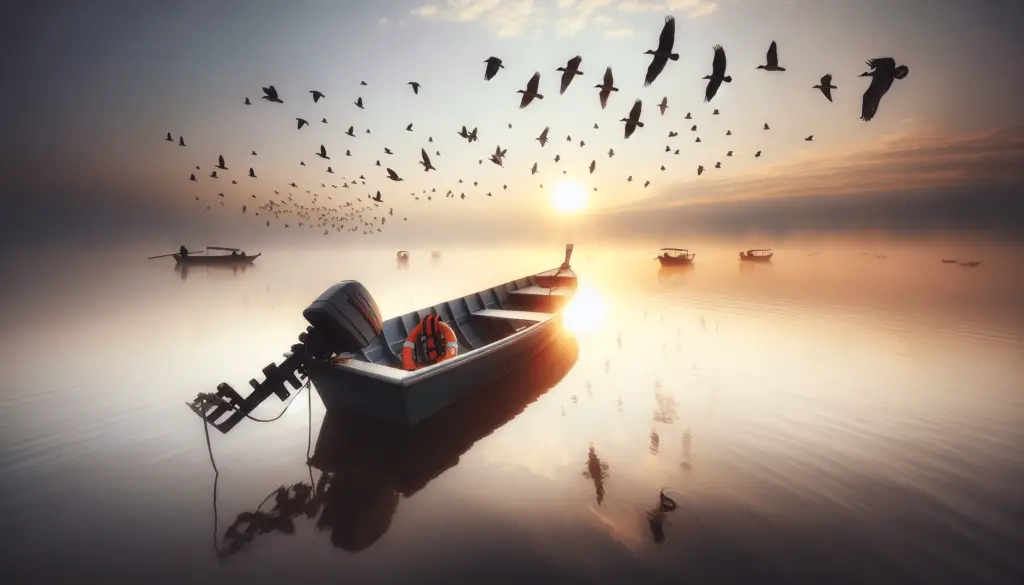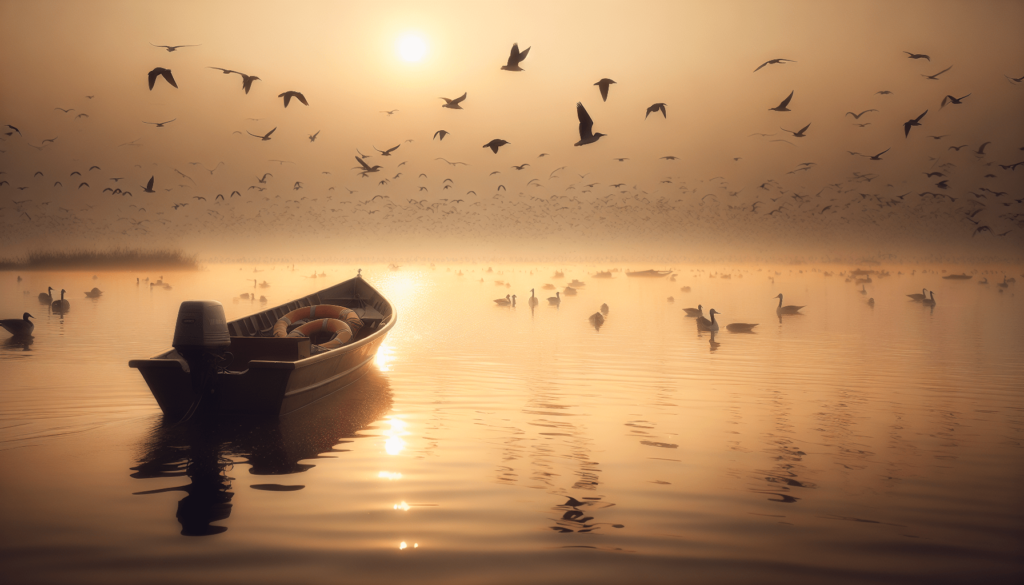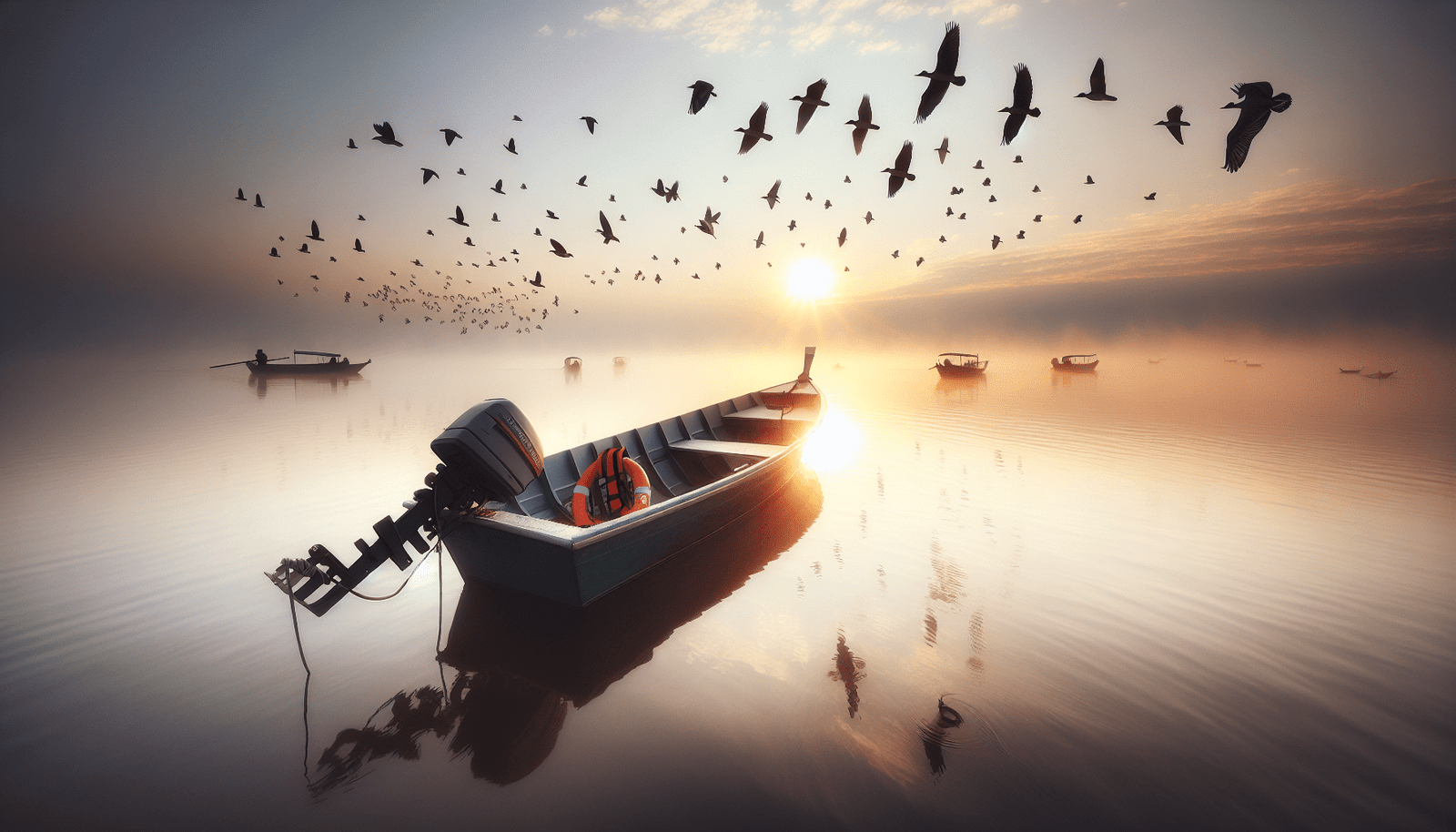Drawing yourself closer to the unkempt grace of nature’s winged wonders, engaging in bird watching while boating may often seem like an effortless symphony. Yet beneath this ballet of feather and ripple hides a critical demand for safety precautions. “Boating Safety Considerations for Bird Watching” navigates you through the essential safety measures that ensure a balance between your fondness for avian pursuits and the surround edicts of boating safety. The wake of this guide leaves you more informed, more prepared, and undeniably safer as you commune with nature’s airborne ballet.

Understanding the Basics of Bird Watching
What is bird watching?
Flitting amid the abundant tapestry of nature, their elegant flight, vibrant plumage, and captivating symphony of song, birds have always had a charming allure. Bird watching is a creative pastime where you observe and appreciate these avian wonders in their natural habitat, learning about their distinct behaviors, species variation, and fascinating life cycles.
The enjoyment and importance of bird watching
Bird watching allows you to embrace the serenity of nature, stirring a sense of awe and curiosity as you discover the unique world of these feathered beings. It is a pursuit that engages your senses, challenges your mind, and promotes physical activity, all while fostering a profound respect for wildlife and nature’s harmony. Furthermore, monitoring bird populations can help scientists detect environmental changes, making bird watchers essential guardians of our ecosystem.
Popular locations for bird watching
While feathered friends can be found near any green space, certain locations offer resplendent and diverse bird species. Coastal areas, wetlands, forests, and nature reserves across the globe are rich in bird life and provide unique bird watching opportunities. From tropical jungles to arctic landscapes, you can find remarkable avian colonies in virtually all types of climates and terrains.
Safety Measures for a Bird Watching Trip
Planning the trip in advance
Like any expedition, a bird watching trip requires careful planning. This includes researching the location, understanding the best times for bird sightings, knowing the terrain, and preparing a checklist of needed supplies. Proper planning ensures a safe, enjoyable, and fruitful bird watching experience.
Checking weather conditions
While a drizzle might bring out the elegant dance of a peacock, severe weather can turn your bird watching trip into an unpleasant ordeal. Check the forecast ahead of your trip and plan accordingly. High winds, for instance, might disrupt bird activity, while excessive heat can be physically strenuous.
Having a contingency plan
Despite meticulous planning, unexpected circumstances might arise. Having a contingency plan is vital. This could involve knowing alternate routes, planning for unexpected overnight stays, or being prepared to postpone the trip if conditions become unsafe.
Knowing your physical limitations
Bird watching can involve long periods of walking, sometimes over rough terrain. Being aware of your physical fitness and limitations is essential. Listen to your body, take regular breaks, and never push beyond your comfort zone.
Essential Gear for Bird Watching from a Boat
Binoculars and spotting scopes
Enhanced vision is critical when bird watching. High-quality, waterproof binoculars and spotting scopes offer a closer view of distant birds or those hidden amid foliage. Ensure your optics provide clear, sharp images to fully appreciate nature’s winged marvels.
Field guides
Carry a field guide to help identify various bird species in the region. These books contain images, descriptions, and valuable information about different birds, making identification easier and enhancing your bird watching experience.
Notebooks and sketch pads
These allow you to jot down observations, sketch birds, and record your experiences. They serve as memory aids and can also provide data for future reference or scientific research.
Proper clothing and personal items
Don your adventure outfit! Opt for comfortable, weather-appropriate clothing, preferably in colors that blend with the environment. Broad-brimmed hats, sunglasses, sunscreen lotion, and insect repellent can add to your comfort during the trip.
Maintenance of bird watching equipment
Regular care and maintenance of your bird watching equipment will prolong their life and ensure reliability. Cleaning of optical lenses, ensuring notepads are dry, and checking any tech equipment for adequate battery levels are a few things to consider.
Boat equipment – oars, lifeguard rings
Ensure your boat is fitted with essential safety gear, such as oars for manual navigation and lifeguard rings for emergencies. Regular maintenance checks for the boat are crucial for a safe bird watching experience on the water.
Necessity of Life Jackets
Types of life jackets
Choosing the right life jacket, or personal flotation device (PFD), is important. There are different types depending on the specific water activity, water temperatures, and personal comfort. Ensure the jacket is approved by the relevant safety authority.
Importance of life jackets while bird watching on boat
Life jackets are critical for safety on water, no matter one’s swimming skills. They provide buoyancy, keeping you afloat if you accidentally fall overboard, and may also offer thermal protection in cold waters.
Correct way to wear a life jacket
A poorly fitted life jacket can hinder its effectiveness. Make sure it fits snugly, that all buckles are fastened, and the straps are properly adjusted. Remember, a life jacket won’t work if you don’t wear it!

Navigation and Lighting Essentials during Boating
Use of compass and maps
A compass and map are basic navigation tools that can help guide you through the water body. Even with modern GPS technology, understanding these traditional navigation means is crucial, particularly if electronic devices fail.
Practices of navigating the waters
Safe boating requires you to be familiar with basic navigation rules. This includes understanding buoys and markers, maintaining a safe speed, and following right-of-way procedures.
Boat lighting for visibility and safety
Riding a boat without proper lighting is like walking in the dark. Boat lights not only provide visibility but are also a means of communication with other vessels. They can signal your position, direction, and status, contributing to safety during evening or early morning bird watching trips.
Usage of GPS and electronic navigational aids
A GPS or electronic chartplotter can be a boater’s best friend. These tools provide accurate location data, chart out routes, highlight underwater obstructions, and offer a wealth of other useful navigational information.
Boating Etiquettes for Bird Watchers
Maintaining a safe distance from the birds
While the anticipation of spotting a rare bird can be exciting, it is important to maintain a safe distance. This prevents stress to the birds and mitigates the risk of disrupting their natural behavior.
Avoiding direct disturbance to the avian environment
Just as you would not appreciate a stranger intruding in your home, birds too deserve their privacy. Avoid damaging nests, feeding birds human food, or causing unnecessary noise that might disturb them. Respect their habitat as you enjoy your bird watching experience.
Tips on moving around the boat quietly
Moving softly around the boat not only enhances your chances of spotting birds but is also a safety practice. Use hand signals instead of shouting, distribute weight evenly when moving, and ensure any loose equipment is secured to prevent noise or accidents.
Emergency Preparations
Prepping for sudden weather changes
Weather can be unpredictable, and a serene waterscape can quickly turn turbulent. Be prepared with suitable clothing, secure all equipment, and know your course back to safety.
Having first-aid kits ready
Accidents can happen, and having a well-stocked first-aid kit onboard is vital. This should include bandages, antiseptics, painkillers, and any essential personal medication.
Understanding signals and flares
Understanding how to use flares and emergency signals can be a lifesaver in distress situations. Familiarize yourself with different types of flares, their uses, and the universal SOS signal.
Keeping emergency contact information handy
In an emergency, knowing who to contact can make all the difference. Keep handy the numbers of local authorities, nearby boating services, and family members who could provide assistance.
Knowing Local Authorities and Regulations
Understanding local boating laws
Every region has its specific boating laws, governing speed limits, boat safety requirements, and right-of-way rules among others. Familiarize yourself with these laws to ensure a smooth boating experience.
Protecting aquatic and bird life – local conservation rules
Aquatic habitats are often delicate ecosystems. Adhere to conservation rules, such as waste disposal regulations, interaction with wildlife, fishing restrictions, and more, to ensure you protect the environment you’ve come to appreciate.
Knowing the permissions required for boating and bird watching
Some areas may require special permits for boating or bird watching. Avoid any legal complications or unintentional harm to sensitive habitats by understanding and obtaining all necessary permissions.
Food and Water Safety
Taking enough supplies for the trip
Ensure you have ample food and water on board. It’s always better to have some extra provisions, in case the trip lasts longer than initially planned.
Maintaining food and water hygiene
Avoid foodborne illnesses by practicing good food and water hygiene. Use sealed containers for food storage, wash hands before meals, and ensure drinking water sources are clean and reliable.
Understanding the ill-effects of alcohol consumption while boating
Operating a boat under the influence of alcohol is not only against the law but also significantly increases the risk of mishaps. Keep alcohol usage in check to ensure safety on your bird-watching adventure.
Post-trip Guidelines
Cleaning the boat after use
After an exhilarating bird-watching trip, ensure your boat is clean and ready for the next adventure. Remove any trash, secure all equipment, and wipe down surfaces to prevent dirt accumulation or damage.
Reporting any unusual bird behavior or environmental issues
As a bird watcher, your observations contribute to our understanding of avian life. Report any unusual bird behavior to the relevant authorities. Similarly, any noticeable environmental concerns, like pollution or habitat destruction, should be reported for appropriate action.
Safe docking practices
Safely practice docking your boat after the trip. Approach the dock slowly, consider wind and current, and secure your boat with the necessary ropes and knots.
Storage of equipment
Proper storage of equipment prolongs their life and ensures their effectiveness. Clean your gear, allow it dry thoroughly to prevent mold and rust, and store it in a cool, dry place until your next bird-watching extravaganza.
Remember, while the entrancing world of birds might be the star of your trip, safety and respect for nature should be your guiding principles. So grab your binoculars, board your boat, and embark on your avian adventure!

